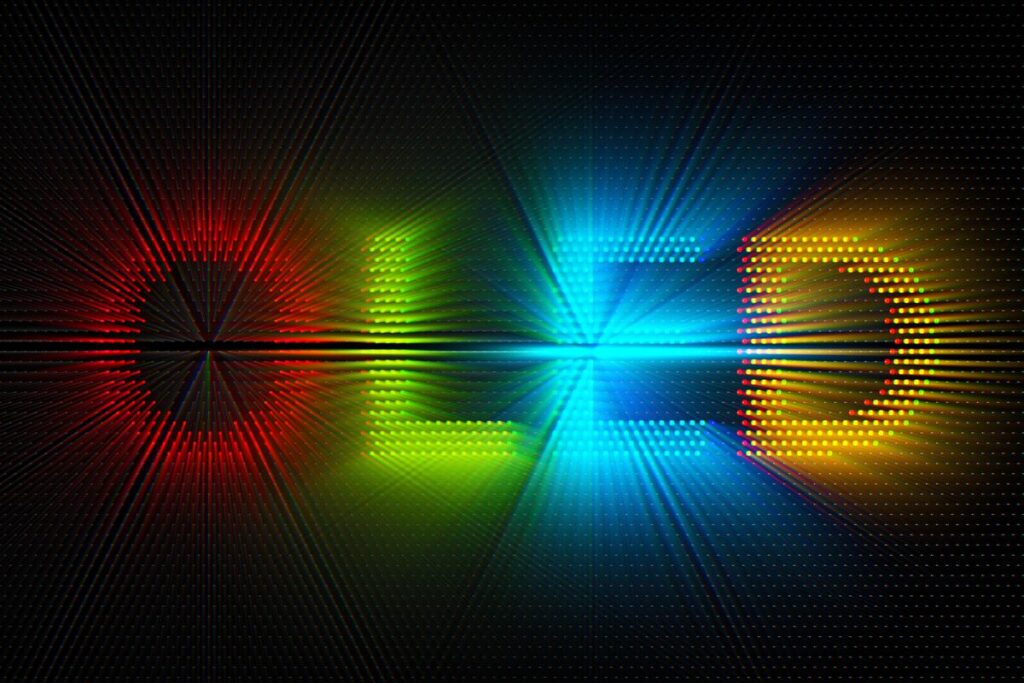OLED TV Durability (9 Quick Answers!)
Disclosure: Tech Parasol is supported by its readers. When you purchase through links on our site, we may earn an affiliate commission. Thank you.
OLED TVs are known for being extremely thin – mainly because they don’t have LED backlights, liquid crystals or color filters unlike LED TVs.
But does this mean that OLED TVs are fragile and break more easily or are they pretty durable?
Let’s find out.
Are OLED TVs durable?
OLED TVs are durable and should last for years, despite constant use.
In terms of the OLED panels themselves, these are extremely flexible, more so than LED panels and they only tend to break with impact damage.
But OLEDs TVs are self-emissive, meaning that they produce their own light.
And it’s the organic molecules they use inside them that degrade over time.
Also because each sub-pixel degrades at a different rate, the color balance of the screen will change over time.
And then you have the issue of burn-in where static images can “burn-in” and remain on the display permanently.
However, this is less of an issue with modern OLED TVs, especially if you vary the picture and watch the TV normally.
There’s also a bunch of features on OLED TVs that help retain image quality such as pixel refreshers and screensavers that trigger automatically when static images are detected.

What’s the lifespan of an OLED TV?
OLED TVs should last years without any problems. In fact, the Korea Times reported in 2016 that LG OLED TVS should have a lifespan of over 100,000 hours which is 11 years of constant use.
If you were to watch an LG OLED TV for 10 hours a day, then it will last you 30 years.
Due to technological advancements, LG OLED TVs last much longer than they used to.
In 2013, the lifespan was just 36,000 hours.
It’s also worth noting that most of the OLED panels you see in different brands are in fact manufactured by LG.
Brands that use LG OLED panels include Vizio, Sony, Panasonic, Hisense, Bang & Olufsen, and Toshiba.
Take a look my OLED TV lifespan guide for more details and examples.
Do OLED TVs last as long as LED TVs?
In short, yes, in fact OLED TVs can last longer than LED TVs. LG says its OLED TVs have a lifespan of 100,000 hours.
In comparison, LED TVs have an average lifespan of between 40,000 and 60,00 hours at maximum or close to maximum brightness.
But if you lower the brightness then an LED TV will last even longer and could last 100,000 hours or over 10 years.
This would bring them in line with the longevity of an OLED TV.
How fragile are OLED TVs?
OLED TVs are extremely thin, and you may be worried that you could damage an OLED when handling them, like when you’re unboxing one for example.
But after having watched the video below by TellyDan, it seems that OLED TVs aren’t as fragile as you might imagine.
In the video, the OLED panel was demonstrated to be flexible by bending it. TellyDan also applied quite a bit of pressure by pressing his fingers on the screen.
Yet the TV didn’t sustain any damage either to the chassis or the panel itself.
The only way the TV was able to be damaged was by throwing a wooden Jenga block at the screen the second time around!
This smashed the glass at the front and caused damage to the OLED panel causing the screen to go black.
Whilst doing the research for this blog post, I also came across another video, this time by LG.
They did a tear down of an OLED TV and were able to bend an OLED panel without cracking it.
This demonstrates that these panels are extremely flexible.
You can watch the video for yourself below:
Will OLED TVs break when touched or pushed?
OLED TVs won’t break if they’re touched or pushed lightly. But they are prone to impact damage if a projectile hits the screen hard enough.
In other words, an OLED screen will generally break when the glass at the front is broken.
Can OLED TV screens crack?
OLED TV screens can crack with stress and pressure, but they are more likely to crack with impact damage.
Are OLED TVs more fragile than LED TVs?
OLED TVs are less fragile than LED TVs, mainly due to their flexibility.
The plastic, organic layers that make up an OLED are thinner, lighter and more flexible than the layers in an LED or LCD.
TellyDan (above) also pointed out that he has seen LCD TVs break a lot easier than OLED.
He also pointed out that they would have cracked sooner than an OLED TV given the same impact by a projectile.
Can OLED TVs be transported without breaking?
OLED TVs can be transported without damage if you transport them in the correct way and in the original styrofoam-padded box that came with the TV.
OLED TVs should only be transported upright and should never be laid down flat, transported on its side or be allowed to fall.
By laying the TV flat, the weight of the TV would be directed to the center of the screen which could cause it to crack due to the lack of support.
When the TV is upright, the weight is distributed evenly on the sides of the TV.
You should also use a soft cloth to prevent the screen from being scratched.
Are OLED screens made of glass?
Most OLED screens have a thin layer of glass at the front to protect the OLED panel itself.
Sources
OLED Advantages and Disadvantages | HowStuffWorks
‘Thorough inspection brings perfection to LG’s OLED TV’
What is OLED? Black levels, burn-in, and new Switch explained
World’s second OLED TV factory now in ‘full-scale mass production’

Robert Anderson
Robert Anderson, the founder of Tech Parasol, had a keen interest in tech from a very young age. He studied Electronic Engineering at University and then went on to become a Software Developer. He launched Tech Parasol in 2021 to share his knowledge with the aim of making tech easier to understand for everyone.
